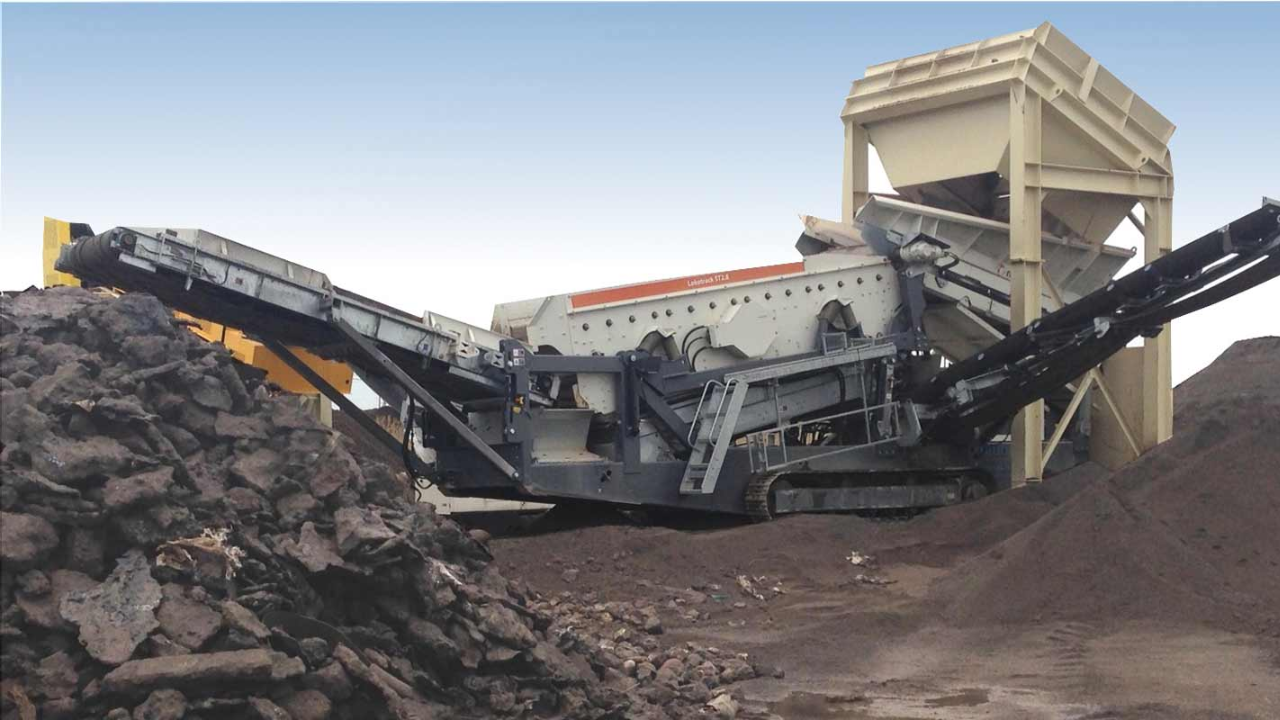The technology of crushing has developed significantly throughout the decades. Initial operations were based on fixed plants, which were practical but not very mobile. As demand for aggregates, mining, and recycling increased, flexibility became essential. This was a decisive moment when tracked mounted crushers were introduced, offering efficient rock processing at work sites. These machines will enable you to minimize hauling, save money, and maximize production without compromising current environmental requirements.
The Rise of Track-Mounted Crushing Technology
Stationary crushing systems have long dominated the mining and aggregate processing industries. Moving them meant de-assembling, transporting over a long distance, and long downtimes. This constraint was overcome with the advent of mobile solutions. Track-mounted designs, founded on crawler technology, were a real solution to relocation problems. These crushers pass through uneven or rugged surfaces with less difficulty by traveling on tracks. The construction, quarrying, and recycling industries have a high demand rate, and in this case, versatility directly affects the profitability of a project.
Key Characteristics of Track-Mounted Crushers
Track-mounted crushers combine a small size with high-endurance. Reduction in their design favors both primary and secondary rock processing. You are not dismantling, and can shift them between projects. This minimizes the time wastage and sustains operations. Many of the models feature diesel-electric or hybrid drives, enabling you to save money by using less fuel and producing lower emissions. Rigid environmental regulations can also be used alongside combined dust suppression and noise-reduction systems. These characteristics render them applicable to both urban and rural projects.
Types of Track-Mounted Crushers and Their Processing Roles
Different crushers are required for various applications. Mobile crawler jaw crushers are used for primary crushing, where large feed sizes are reduced to as small as 750 mm. They offer capacities ranging from 20 to 450 tons per hour, making them suitable for mining and quarrying applications. The mobile crawler impact crushers are geared towards recycling. Concrete and asphalt are refined into uniform aggregates in mobile crawler cone crushers, which have feed sizes of up to 240 mm and produce product sizes of approximately 18-40 mm. Crawler sand makers utilize the VSI technology to process materials finely. These generate sand and cubical aggregates less than 5 mm. Together, these crushers form flexible trains that can be used in non-standard on-site tasks.
Efficiency and Productivity Benefits
On-site processing of rock removes the expense of transporting material to the fixed plants. You save both time and fuel. Fast assembly and dismantling in track-mounted crushers are also crucial in project-based operations. They have a capacity of 20-450 tons per hour, depending on the type of crusher. Automation and real-time diagnostics that streamline throughput and reduce downtime characterize most of the units. It is capable of uninterrupted operation with little interruption.
Safety/Maintenance/ Reliability Considerations
In a track-mounted crushed construction, safety is the top priority. Compliance is ensured through emergency stops, safe access stairs, and protected operator platforms. Predictive maintenance notices are given through the monitoring systems, and failures are avoided. Long-lasting materials are used in complex environments. There are also sophisticated designs of these machines that are easy to service, even in isolated or other difficult-to-reach areas. This means that you become reliable and stable in operations.
Environmental and Sustainability Advantages
Contemporary crushers that are mounted on tracks have a reduced environmental impact. Drives that use a lot of energy are reduced to an extent. Emissions are reduced substantially as compared to traditional workflows based on haul and crush. Dust suppression systems also ensure that operations are cleaner, while noise control helps in complying with urban regulations. These crushers are also conducive to the concept of the circular economy through the possibility of on-site recycling. Waste at the construction level can be recycled into other aggregates, thereby building the cycle of material utilization.
The Future of Track-Mounted Crushers in Rock Processing
Hybrid track-mounted crushers and fully electric ones are becoming increasingly popular, which further reduces emissions. As the urbanization process intensifies, the recycling of construction waste is expected to increase, thereby enhancing the importance of mobile systems. Scalable, modular solutions will also enable easy placement in a variety of projects. You can also look forward to a sustained innovation that will lead to efficiency and sustainability.
Conclusion
Track-mounted crushers are one of the significant advances in modern rock processing. They incorporate transportability, effectiveness, and ecology. They are the most versatile and offer unmatched flexibility as they minimize hauling, create fuel savings, and use a variety of materials. They are very flexible because they reduce freight transportation, save fuel, and transport a diverse range of materials. They are also commensurate with sustainability goals in terms of recycling and energy saving. Crushers mounted on tracks will remain at the center of the aggregates, mining, and construction recycling sectors as they evolve. Eastman has continued to offer innovative, safe, and efficient crushing machinery to address the varied needs of international operations.


